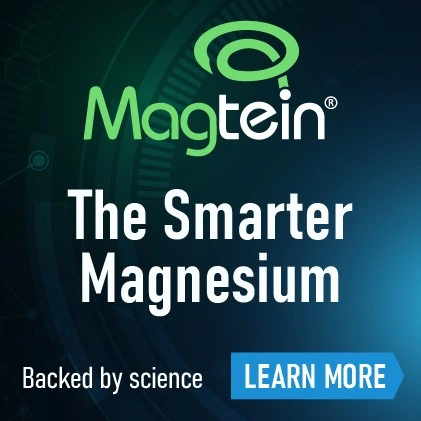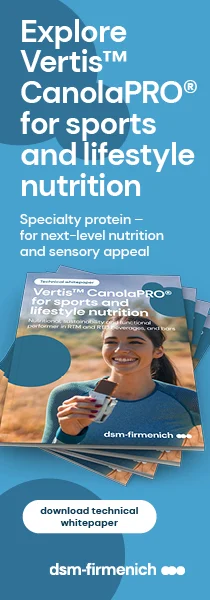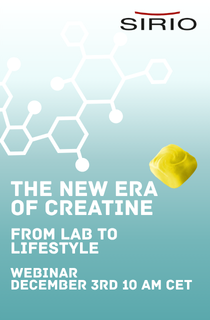The rise of active nutrition: Industry roundtable weighs in on holistic category
19 Nov 2020 --- Active nutrition is a term appearing more frequently as consumers from all walks of life look to improve their well-being. Generally thought of as a broader category than sports nutrition, development in this sector is hinged on a variety of consumer behaviors outside the athletic category, including increased time in front of screens and an awareness of aging.
NutritionInsight speaks with experts from Bioiberica, Vaneeghen, Gencor and Lonza about the remaining challenges and upcoming opportunities in the active nutrition market.
“While sports nutrition typically conjures up images of professional athletes and serious gym-goers, active nutrition is much more relevant to everyday consumers,” says Jaume Reguant, healthcare director at Bioiberica.
“The category represents a broader scope of both new and emerging trends, targeting people who seek healthier lifestyles, regardless of their age or fitness level.”

As the sports nutrition market starts to segment into different consumer categories, active nutrition is becoming the term of preference, according to Mariko Hill, product development executive at Gencor.
She proposes that active nutrition refers to products focused on optimizing health and promoting the desire to be ageless. “This represents a generational shift of consumers now focused on health rather than performance.”
In contrast, Hill sees performance nutrition as applying to products that are focused on enhancing the performance and recovery of athletes.
“While this is more seriously focused on exercise and performance, it does still have some crossovers with active nutrition, such as sleep or immunity.”
Overlapping categories
As time goes on, the umbrella of active nutrition also becomes broader. It now encompasses everything from solutions for elite sports and physical performance right through to those designed to support an active lifestyle, observes Stephane Vouche, marketing manager of Lonza Capsules and Health Ingredients.
“Consumers are increasingly aware of how different aspects of health are connected, and so their priorities overlap,” he states.
“Today, there’s less of a focus on ‘physically active’ consumers, and more on ‘health conscious’ consumers, as people start to take a more proactive interest in their health,” adds Reguant of Bioiberica.
“As a result, there’s more cross over between product categories than ever – the same products can appeal to different consumers for slightly different reasons.”
Given the growing numbers of consumers interested in concepts like healthy aging, and those seeking to improve their health and wellness – particularly in light of COVID-19 – active nutrition is a fast-growing area that intersects with lots of other spaces like sports nutrition and even joint health, he continues.
Vouche further notes that some consumers may seek to improve joint strength and flexibility in order to perform better during exercise, as well as to preserve joint health over time. This means their needs can be served by both solutions for sports nutrition and aging well. Active nutrition is a fast-growing area that intersects with lots of other sectors like sports nutrition and joint health.
Active nutrition is a fast-growing area that intersects with lots of other sectors like sports nutrition and joint health.
E-sports go mainstream
Another major subcategory within active nutrition is cognition. Today, an active or athletic lifestyle does not necessarily involve much physical exertion – a lot of exhaustion comes from long hours spent behind LED screens, working, connecting with others and e-gaming.
“E-gaming itself has evolved into the massively popular e-sports industry, driving a growing global interest in supplement solutions that help with prolonged concentration and cognitive health, as well as for protection from blue light,” says Vouche.
Erik Bakkers, innovation and marketing director at Vaneeghen, also sees e-sport athletes as a new target group with its own nutrition needs.
The rise of this market is also being driven in part by demands stemming from COVID-19, according to Bakker. This is coming on top of prior growth, with the gaming market now being three times bigger than the movie industry.
“E-sport athletes are concerned about energy levels, visual processing speed, reaction time and performance accuracy and the ability to recover after intense gaming,” adds Ronald Geerts, technical and regulatory director at Vaneeghen.
Challenges around personalization
The diversity of the active nutrition market means there’s always a new trend or hot topic on which the industry can capitalize, notes Reguant. “Personalized nutrition is a major trend that reaches every corner of the segment.”
“Consumers who know better what they want will also look in the market for products that have a better fit or match to their personal needs,” says Bakkers.
However, personalization can be difficult when there are multiple different target groups. “For example, protein products for recovery have been making a transition to less hardcore-fitness consumers over the last few decades,” illustrates Geerts.
“The challenge here is to make sure you understand the needs of these consumers well and adjust your product development and messaging on the package,” he continues.
“For example, hardcore fitness consumers seek results and high concentration protein, while some women going to a gym class twice a week want to be a bit more toned and have ingredients that add to those benefits.” COVID-19 has spurred even more growth in the e-sport market.
COVID-19 has spurred even more growth in the e-sport market.
Circumventing branding obstacles
Bringing consumer-driven solutions to market quickly and efficiently is not without its difficulties. “They must tell a compelling story that is backed by science. This is also while delivering the now prerequisite strong clean label credentials from the ingredient right through to the dosage form,” says Vouche.
Meanwhile, Hill notes that brands need to adopt a clear message or brand image to target the right consumer demographic. While some active consumers may still resonate with the classical sports nutrition messages of muscle size, strength and recovery, the majority are more interested in exercising for health or “weight wellness.”
“Although the sports nutrition industry is growing, this may lead to confusion or certain challenges for those brands that have already established themselves in the market. For example, performance nutrition brands targeting hardcore gym-goes may find it hard to capture the interest of active nutrition consumers without re-branding,” she details.
Casting predictions for the 2020s
Advancement in technology and more published studies backing the benefits of nutraceuticals in human populations have been the two biggest changes over the last decade, according to Hill.
She predicts that the 2020s will hold even more research and technological breakthroughs. These will further support the use of dietary supplements in the active nutrition space and to enhance health or performance.
“We expect that consumer values will continue to shape our industry and that the need for science-led innovation will remain at the forefront of the public agenda, particularly in today’s climate,” adds Vouche.
Meanwhile, Reguant expects a bigger focus on holistic approaches to health, with more products on the shelves that combine complementary health positionings.
“Convenient better-for-you products that not only provide nutritional value, but also bring added health benefits, such as supporting mobility and improving sports performance, are one such example.”
By Katherine Durrell
















